
Performance Chips and Modules
What Does Performance Enhancement Mean?
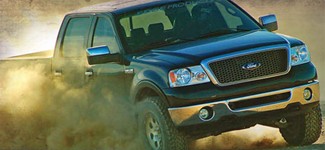
You can boost your vehicle's performance in a variety of ways. Aftermarket air intakes, exhaust systems, manifolds and more can be added to your car, truck or SUV to improve horsepower, torque and fuel efficiency.
But if you really want to get the most out of your vehicle, you should consider custom tuning your engine. There are multiple types of performance chips and tuners on the market, all of which are designed to give you the power and control that you seek. Whether you want to race your car, tow with your truck or go off-roading in your Jeep, a performance chip can help you create the perfect vehicle for doing so.
Enhancing your engine's functioning is the key. Vehicle manufacturers set caps on speed, RPM and more. Sometimes this is done as a safety feature to protect your vehicle from any damage that can occur from pushing your engine too hard. Sometimes it is done to comply with emissions standards. Depending on the tuner and your engine, you can achieve massive gains in horsepower and torque, leading to a fast car, a fun driving experience or an optimal towing adventure.
By getting the most out of your engine with a tuner, you not only achieve increased power, but you can also optimize your fuel economy and create an all-around better functioning, more efficient system.
This article provides an all-inclusive overview of the purpose and functionality of performance tuners. The following topics will be covered in detail:
- Reasons for Using a Performance Tuner
- How Performance Tuners Work
- Power Levels and Advanced Features
- User-Adjustable Parameters
- Monitoring Capabilities
- Quick Comparison of Most Common Tuners
- Compatibility with Aftermarket Accessories
- Custom Mounts and Accessory Parts
- Tips and Troubleshooting
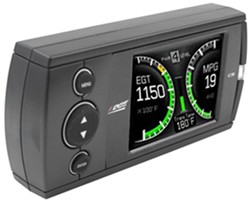
Why Use a Performance Tuner?
Anyone can tune their engine, but most people who are willing to invest in a custom module have more in mind than simply having fun on the open highway. The following are the most common reasons for purchasing a performance tuner.
Towing
- With the increase in horsepower and torque offered by a tuner you can tow on nearly any terrain.
- Take hills with ease.
- Speed up and slow down as you would if you didn't have a ton of extra weight at your back.
- Optimize your engine to deal with the extra weight, thus preventing overtaxing other components of your vehicle.
- Alter transmission shift points for smoother towing. Stay in a higher gear for longer and spend less time "hunting" for lower gears.
Fuel Economy
- Tuning your engine creates an overall more efficient system. Provided you don't abuse your newfound power, you can actually increase your vehicle's fuel efficiency.
- Many products have special programs you can run to help you achieve maximum fuel economy by coaching you and supplying tips on how to drive efficiently.
Safety
- Programmers are often equipped to read and erase diagnostic trouble codes, ensuring that you are made aware of any potential problems with your engine.
- Advanced safety features, such as automatic defueling to prevent transmission slippage, are available.
- Basic monitoring of a multitude of parameters keeps you informed of your engine's functioning at all times.
Off-Roading
- Most often found with tuners designed specifically for Jeeps, many programmers have features that allow you to disable traction control or alter alerts to prevent them from occurring while you're off-roading.
Racing
- Horsepower and torque gains can be dramatic. Get past the factory-set rev and speed limiters and turn your vehicle into a racing machine.
- Note: Because of concerns about the misuse of performance products for racing purposes, most chip manufacturers encourage closed course racing only. Some power levels can only be attained after you sign a waiver stating that you will not use those power levels on any public streets or highways.
How Performance Tuners Work
Some performance chips are specific to your vehicle's year, make, model, and engine; others are able to work with many vehicles. For the most part, tuners have data pertaining to several different vehicle and engine types saved on their internal chips. But only select programmers are able to be transferred among different vehicles. Consult etrailer.com's performance chip application guide to determine which tuner(s) will work for your vehicle.
The primary way in which your vehicle can achieve more power is by adjusting the air-fuel ratio, fuel injector flow rates and spark timing. This is done by first evaluating the fuel and spark maps of a vehicle. From there tuner manufacturers can test the limits to see how far your vehicle can be pushed.
Regardless of how a tuner interacts with your vehicle, all have the same purpose. Either signals are sent to override other signals so as to improve engine performance, or custom calibrations are uploaded into your car's computer to boost performance.
Plug-In Models
The majority of performance tuners include a plug that simply connects to your vehicle's OBD-II port for fast, easy installation. Once plugged in, the programmer has access to the information stored on your vehicle's computer, or engine control module (ECM). The custom-designed tunes that are programmed into the chip can then be, essentially, imported into your computer. By gaining access to your vehicle's computer, you are also able to run scans for diagnostic trouble codes, monitor a variety of parameters and reset certain stock limiters.
Add-On Devices
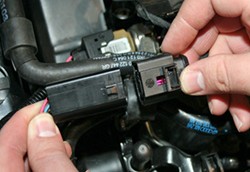
Some modules are designed to connect to your vehicle's wiring harness. These tuners can directly intercept signals from various engine sensors and send modified signals back to the computer. Instead of interfacing with your vehicle's computer to allow you access to it, these programmers are self-contained, add-on computers that essentially bypass your factory computer to enhance factory settings.
These add-on ECMs function in a variety of ways. One way is to send a signal to your vehicle's computer telling it that the fuel pressure is lower than it actually is. The computer then triggers an increase in fuel rail pressure, resulting in more fuel being released into the engine, thus boosting power.
Power Levels and Advanced Features
The number and type of power levels available to you will vary based on the manufacturer and particular model of your performance module. Power levels, features and power gains are also dependent on your specific vehicle and engine. That being said, there are many similarities that stretch across the board in performance tuning. Although the following list is not comprehensive and may not be indicative of the levels or features offered by tuners for your vehicle, it does offer a representation of what you can expect to have in a given performance module.
Stock Setting
While this is not considered a tune, this level is available on all tuners. When "stock" is selected, your vehicle's computer will be returned to the factory-set parameters. This level represents an important option. Before taking your vehicle in for any sort of maintenance, and certainly before going in for an emissions test, you should always return your vehicle to the stock setting.
Economy or Mileage Setting
This tune is not always offered, nor is it explicitly offered as a power level. But most tuners do provide methods for improving fuel economy. Sometimes this is in the form of a power level designed to optimize your engine and transmission to provide the best fuel economy possible. Sometimes a special program is available to coach you so that your driving methods result in improved fuel efficiency.
Tow Tune
One of the most common reasons for tuning an engine is to make towing easier. This is accomplished by boosting horsepower to the point at which your vehicle can run in a higher gear. As a result, powering along with that extra weight at your back won't overtax your engine.
Many performance modules have tunes specifically designed for towing. These levels give you just the right amount of power while also optimizing your transmission for towing.
Not all tuners have a specified towing tune, but if you read the description of each level closely, you will likely find one that is designed for towing applications. Edge, for example, recommends that you tow in Level 1 or 2 to get the best ride while also reducing stress on your transmission.
Because towing can be hard on your vehicle, it is important to keep an eye on your engine as you tow. Boosting horsepower might make towing easier, but pushing your vehicle too far can have dire consequences for your engine. If you have a diesel vehicle, be sure to closely monitor EGT readings as you tow so that you can prevent engine damage before it begins. Most tuners let you set alerts to notify you if EGT reaches an excessive level, making monitoring a snap.
Off-Roading Tunes and Features
Many performance tuners offer Jeep-specific tunes for the ultimate in off-roading. The power gains achieved with these modules aren't typically extreme, because they work with gas engines. But the various off-road-specific features make up for that.
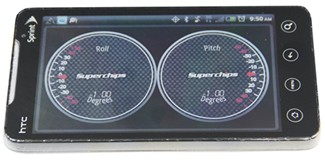
- Adjust the threshold on your tire pressure monitoring system to avoid annoying warnings
- Reset the temperature at which your electric fan is set to go on or off
- Power your winch or air compressor while idling
- Get high low-end torque for improved power and control in 4WD
- Get 4WD-HI axle lock with auto-disengage safety feature
- Measure pitch and roll with built-in accelerometer on VIVID LINQ
Race or Extreme Levels
Because the primary reason for installing a performance tuner is to increase horsepower and torque, it follows that many people who use them are interested in driving fun. Typically, there are levels available that provide hefty power gains that are considered appropriate for on-road use. Sometimes, however, gains are so extreme that the power levels offered are only allowed for use in closed-course racing applications. For the most part, tuners that offer extreme power boosts require that you contact the chip manufacturer directly and sign a waiver before you can access any "race only" power levels.
User-Adjustable Parameters
Many modules have a wide range of features aimed at improving drivability and performance. The types of parameters that can be adjusted vary from tuner to tuner, as well as from application to application. Therefore, just because a parameter is listed as being available with a certain product, that does not necessarily mean it is available for your particular vehicle.
Speed Limiter Modification
This feature lets you raise the stock speed limit setting so that you can drive faster. There are always restrictions in place for the speed limiter, even when using a tuner, so adjustability is still limited.
Speedometer Calibration Based on Tire Size
You may need to recalibrate your factory speedometer if you put differently sized tires on your vehicle. This feature will let you do so to ensure correct readings.
Transmission Shift Point Adjustments
Transmission shift points can be adjusted for optimal drivability and firmer, more aggressive shifting. The result is an improvement in acceleration without additional wear and tear on your shift plates. This feature can be particularly beneficial when towing if your adjustments allow you to stay in a higher gear for longer.
Rev Limiter Adjustments
Factory restrictions on your motor's maximum revolutions per minute (RPM) can be lifted. This allows for increased rotational speed, which boosts power.
Safety Functions
A variety of safety functions are available, particularly for diesel applications. While you can typically monitor certain temperatures with your programmer, you may also be able to adjust the minimum or maximum temperature setting for different applications.
- Change the temperature at which your automatic fan is activated to provide more cool air before the temperature reaches a severe level
- Set the maximum EGT required to enact an automatic defueling process
- Program the tuner to sound alerts when certain maximums are met
- Get cold engine protection by ensuring that more power is not added to your engine until it is sufficiently warm
- Allow your engine to keep running after shutoff so your turbo can cool down
Monitoring Capabilities
Many tuners have the added benefit of letting you view various parameters so that you can stay informed of your vehicle's functioning at all times.
You have basically three choices when it comes to the monitoring capabilities of a performance tuner:
- Add-on engine control modules typically offer no monitoring
- Hand-held tuners allow for limited monitoring of vital engine data
- Tuners with in-cab displays let you monitor the largest variety of data in real time
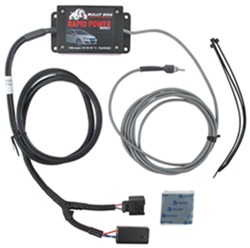
Programmers that plug into your vehicle's wiring harness and do not include an in-cab display do not allow you to monitor data. These chips are designed strictly for boosting power via adjustments to the timing, duration and pressure of your fuel-injection system.
Note: It is always a good idea to monitor vital engine data when you tune your vehicle to avoid damage. Both Edge and Bully Dog make gauge displays that plug into your OBD-II port so that you can observe various parameters, thus ensuring that you are aware of your newly tuned engine's functioning at all times.

Some tuner manufacturers make monitors that are designed solely as in-cab displays. These monitors plug into your OBD-II port and display data collected from your vehicle's computer, such as speed, RPM and temperature readings. You cannot tune your engine with these devices, but you can use them in conjunction with performance chips that plug into your vehicle's wiring harness so that you can keep an eye on your newly tuned engine.
These monitors offer fully adjustable gauge displays so that you can monitor multiple parameters at a time. Many also include programs designed to help you achieve better fuel economy. The Bully Dog WatchDog and the Edge Insight CS and CTS monitors will work with any vehicle that has an OBD-II port.
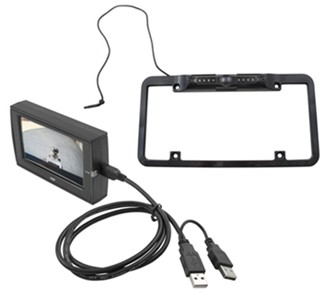
Additional sensors can often be added to these gauge displays - as well as to performance tuners - to capture data that is not monitored by your vehicle's computer. The Edge Accessory System (EAS), for example, offers sensors that monitor:
- Fuel rail pressure or boost psi (EP98607)
- Ambient air temperature (EP98610)
- Engine oil, transmission fluid or coolant temperature (EP98608)
- Exhaust gas temperature (EP98611)
Sensors designed to work with the EAS all attach, daisy-chain style to a cable that plugs directly into your Edge CS or CTS monitor.
The Edge Insight CTS can also display images from the Edge backup camera. Once you set up the license-plate-mounted camera, the Insight automatically goes into camera mode when you put your vehicle in reverse. Then when you're driving, just switch over to your customized gauge display.

Most hand-held programmers allow you to monitor certain parameters. When these controllers are plugged into your OBD-II port, they have the ability to read information from your vehicle's computer. As a result, you can check temperatures, ignition timing, power train data and more. These tuners also allow you to read and clear diagnostic trouble codes.
That being said, hand-held devices are not ideal for monitoring data. They are designed to be unplugged and stowed away after you select a power level. So these tuners do not usually have easy-to-read displays, nor are they simple to mount in your vehicle.
Performance Tuners with In-Cab Displays
Most tuners with in-cab displays are designed to not only tune your vehicle, but also to provide you with an additional set of gauges. These devices typically have the most advanced technology when it comes to data monitoring. The display types vary, but most are easily customizable so that you can control lighting, background, parameter listings and gauge displays. In addition, because these monitors have easy-to-use controls, most offer on-the-fly adjustment.
Bully Dog displays allow you to monitor up to four parameters at a time. The touch-sensitive buttons that line the sides of the monitor let you quickly and easily scroll between different readings so that you can choose the data you want to view. In addition, a customizable gauge display lets you alter the way that data is viewed and interpreted.
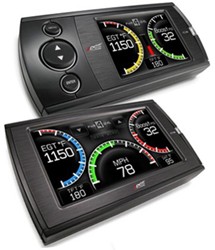
Edge power modules have two different display types. The first is a color screen that is flanked by easy-to-use buttons. The other is a color touch screen that provides a larger viewing area by eliminating buttons altogether. Both of these displays are easy to read and customizable. Edge color screen (CS) and color touch screen (CTS) models are capable of displaying up to eight parameters at a time.
Monitor additional temperatures, pressure or other parameters by adding sensors from the Edge Accessory System (EAS). With this accessory system, you can gather data that is not monitored by your vehicle's computer. Monitor fuel rail pressure, boost psi, ambient air temperature and more by simply installing the sensors and plugging them into the expandable cable.
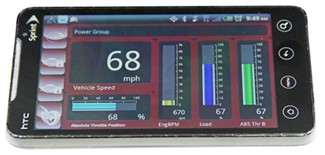
Superchips specializes in hand-held tuners. But they also offer the VIVID LINQ, which plugs into your vehicle's OBD-II port and then transmits data wirelessly to your smartphone. Your phone must operate on an Android system and have Bluetooth capability. All you have to do is download the LINQ app, and your phone will become a full gauge display capable of monitoring vital engine data. You can download the app to your phone for free at any time and run a demo to see how the display will function.
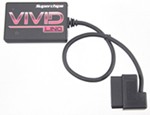
In addition to monitoring data, the VIVID LINQ lets you measure inclines and see your vehicle's pitch and roll thanks to your phone's built-in accelerometer chip.
Quick Comparison of Most Common Tuners
The table below gives a quick breakdown of the different products that Edge, Superchips and Bully Dog have to offer.
| Does it... | Edge | Bully Dog | Superchips | |||||||
|---|---|---|---|---|---|---|---|---|---|---|
| Evolution | Juice with Attitude | EvoHT | Insight | PMT | Triple Dog GT | WatchDog | VIVID | Cortex | Flashpaq | |
| Increase horsepower and torque? | Yes | Yes | Yes | No | Yes | Yes | No | Yes | Yes | Yes |
| Record and log data? | Yes | Yes | Yes | Yes | Yes | Yes | Yes | Yes | Yes | Yes |
| Support custom tunes? | No | No | No | No | No | No | No | No | No | No |
| Improve fuel economy? | Yes | Yes | Yes | Yes | Yes | Yes | Yes | Yes | Yes | Yes |
| Be adjusted to my specifications (alter shift points, adjust parameters, etc.)? | Yes | Yes | Yes | No | Yes | Yes | No | Yes | Yes | Yes |
| Display data? | Yes | Yes | No | Yes | Yes | Yes | Yes | Yes | No | No |
| Read and clear diagnostic trouble codes? | Yes | Yes | Yes | Yes | Yes | Yes | Yes | Yes | Yes | Yes |
| Work with my diesel engine? | Yes | Yes | Yes | Yes | Yes | Yes | Yes | Yes | Yes | Yes |
| Work with my gas engine? | Yes | No | Yes | Yes | No | Yes | Yes | Yes | Yes | Yes |
| Plug into the OBD-II port? | Yes | No | Yes | Yes | Yes | Yes | Yes | Yes | Yes | Yes |
| Measure exhaust gas temperature (EGT)? | Yes | Yes | No | Yes | Yes | Yes | Yes | No | No | No |
| Comply with emissions standards in all 50 states?* | Yes | Yes | Yes | N/A | Yes | Yes | N/A | Yes | Yes | Yes |
*The products above have been submitted for testing and are considered legal in most states, pending the results of final testing. They are, however, not yet approved for use in California.
Horsepower and Torque Gains
The primary function of most tuners is to boost horsepower and torque. With more power, your vehicle can go faster and tow with ease. The exact increase in horsepower and torque will vary based on a number of factors.
First, your vehicle's engine is integral in determining the amount of power gained. Your engine is only capable of so much, and although that is typically more than what the factory settings allow, you are still limited. A diesel engine, for example, can accept a far greater boost in horsepower than can a gas engine. In addition, engines that have been well-maintained and those that have been upgraded tend to achieve higher gains.
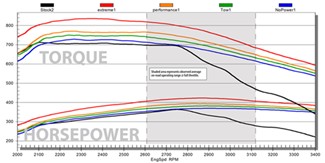
The environment and other outside factors can affect your engine's performance as well. Just as your vehicle normally operates differently in different weather conditions, the same will be true even if you're using a tuner. Altitude can affect the numbers as well. Keep this in mind when you look up the power gains specific to your vehicle. Those listed may reflect testing done under the best possible conditions and, therefore, may not be reflective of real-world driving with your vehicle.
Also, pay attention to the dyno charts released for your particular application to make sure that the gains advertised fall within the RPM range that you typically drive in.
Recording and Logging Data
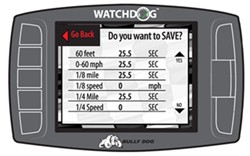
This feature is found on most performance tuners, particularly those with in-cab displays. More often than not the recorded data simply shows various run times. By keeping these times, you can compare your vehicle's performance across the board.
Some tuners are able to record a massive amount of data, including temperature and pressure readings, so that you can get a comprehensive analysis of your vehicle's functioning. This in-depth logging is a special feature that is not available on all tuners.
Custom Tunes
Custom tunes are those tunes that are written and designed by specialists who work outside of programmer manufacturing facilities. With custom tunes, you can redesign the tables to tailor your vehicle to your specifications so that it will function best for your intended application.
Custom tuning may seem like a good idea to the end user, but most chip manufacturers frown upon it. Because of the lack of restrictions with this process, you can't know if a newly designed tune will damage your vehicle or not. It is safest to only use tunes designed and thoroughly tested for your vehicle.
Improved Fuel Economy
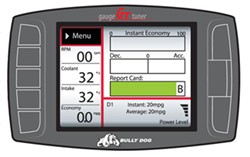
Properly tuning your engine should result in an overall better functioning machine, which can in turn result in improved fuel economy. That being said, it is up to you to drive your vehicle responsibly so as to achieve the best fuel economy. Many programmers offer a built-in tutorial that tracks your driving habits and your fuel usage and offers tips for improving your driving.
Better fuel economy is typically achieved in the following ways:
- Advanced timing of fuel delivery provides a more complete burn, ensuring that you get the most out of every drop of fuel.
- Less down shifting. By giving your vehicle more power in a higher gear, you can use less fuel (because operating in a higher gear consumes less fuel).
- An increase in fuel pressure results in improved atomization of the fuel-air ratio, which improves efficiency.
Monitoring Parameters
Tuners that have in-cab displays with gauge settings typically let you monitor various engine parameters. This is beneficial because you can see exactly what effect tuning your engine has on your vehicle systems. You will know, just by keeping track of the numbers, if your engine is having difficulty with the extra power.
Some of the parameters that are most commonly available for monitoring include:
- EGT (exhaust gas temperature)
- Speed (mph or kph)
- Engine RPM
- Injection control pressure
- Injection timing
- Coolant temperature
- Throttle position
- Transmission temperature
- Mass airflow (grams/second) - amount of air entering intake stream
- Tire calibration
Data Display
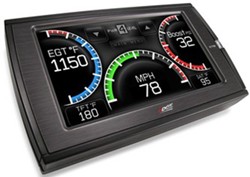
Certain programmers have the ability to display data. Typically, this is seen as a selling point, and monitors are designed to offer the best display possible. The number of parameters that can be viewed varies among tuners, as does the type and manageability of the display itself. Many have several gauge displays that you can switch between or the ability to customize the display. Some models have buttons lining the outside of the screen to help you navigate; others, like the Edge CTS monitor (pictured), have touch screen capabilities.
Some monitors - like the Edge Insight CS and CTS and Bully Dog WatchDog - are designed strictly for displaying data. While these products often have built-in features to help you achieve better fuel economy or track vital engine data, they basically act as all-inclusive, add-on gauge displays.
Reading and Clearing Diagnostic Trouble Codes
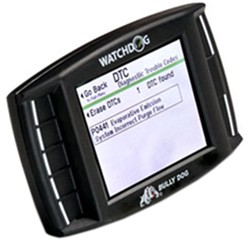
Tuners that plug into your vehicle's OBD-II port typically have the ability to read and clear diagnostic trouble codes (DTCs). These codes are stored in your vehicle's computer. So, whenever there is a problem, you can connect to your computer via the tuner to see what code is present.
The DTCs stored in your vehicle's computer are just that - codes. They can sometimes be difficult to decipher. Some tuners with built-in display monitors will bring up the code with an easy-to-read text description - no translation needed. Others show only the code. In this instance you have to look the code up in the tuner's owner's manual to determine the meaning.
Diesel Applications
Performance tuners were first designed to work with diesel engines. Although many are now made to work with gas engines as well, the most power and most features are still only available for diesel engines. Get extreme increases in horsepower and torque. Monitor exhaust gas temperature to ensure a well-running machine. Set up automatic safety defueling, and more.
Gas Applications
Many performance tuners are designed to work with vehicles that run on gas. The horsepower and torque gains are not always as dramatic as you might find with diesel engines, but you can still get a power boost as well as the ability to use a large variety of special features.
The most important thing to keep in mind when using a tuner on your gas vehicle is the difference between octane ratings. Most programmers have different tunes available for different octane ratings. While you may be able to select any of these tunes, using one that is designed for use with a higher-octane fuel than your vehicle runs on can result in extreme damage to your engine.
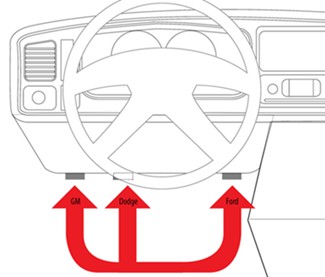
OBD-II Port
The on-board diagnostic (OBD) link was implemented in vehicles in the 1990s and made mandatory for all passenger vehicles in 1996. So, if you have a vehicle that was made after 1996, it will have an easy-to-access port. This port is used to connect directly to your vehicle's computer.
Typically, the OBD-II port is located somewhere beneath your dash. Tuner installation can be as simple as plugging into the port and running through the setup program. Once hooked up, your programmer can interface directly with your vehicle's computer.
Exhaust Gas Temperature Monitoring
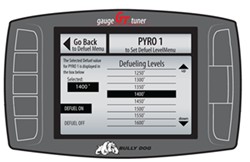
One of the most important features of diesel modules is their ability to monitor your vehicle's exhaust gas temperature (EGT). This reading is perhaps the biggest indicator of your engine's functioning. Essentially, EGT is a measurement of how hot your motor gets. Because changes in gas temperatures can be measured almost instantaneously, measuring EGT provides you with the most accurate and precise temperature reading possible.
To prevent damage to your diesel engine, it is essential that you closely monitor your vehicle's EGT, especially if you are towing or using any power-boosting aftermarket accessories.
Many vehicles come equipped with an EGT probe (or two) located downstream from the turbo. These probe readings are available for display on your tuner's monitor. However, they are not always an accurate representation of combustion chamber temperatures. It is recommended that you install an EGT probe in a pre-turbo location for the most accurate reading possible.
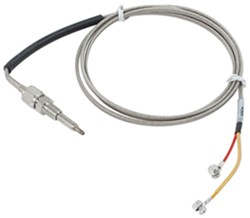
The diesel vehicles that typically come equipped with EGT sensors are:
- Model year 2007.5 and newer Chevy and GMC trucks
- Model year 2008 and newer Dodge trucks
If your vehicle does not come equipped with an EGT sensor, you can add one. Both Edge and Bully Dog offer pyrometer probes that can be installed in the manifold. Edge also offers a pyrometer kit that is compatible with the Edge Accessory System (EAS), making installation even easier by bypassing wiring concerns and offering simple plug-and-play connections.
Emissions Standards
Typically, the concern regarding the legality of performance tuners arises from their ability to disable emissions controls in diesel vehicles. The diesel particulate filter (DPF) that comes standard in diesel vehicles is designed to capture the harmful contaminants that are byproducts of burning diesel fuel. This filter, by doing its job of collecting emissions, restricts the flow of exhaust gas and thus creates back pressure in your system. High back pressure forces the engine to work harder to get rid of the exhaust gases, causing an increase in fuel usage and a decrease in usable power. So, eliminating the DPF will boost both fuel efficiency and engine power.
Some tuners will allow you to disable the regeneration mode on your vehicle so that you can install a DPF-delete system. However, doing this makes your vehicle noncompliant with emissions standards in all states and, therefore, illegal for use on public roads and highways throughout the USA. DPF-delete systems are sanctioned for use only in closed course racing applications and will be labeled as "race only".
If the product is labeled "for off-road use only," it means it. The rule of thumb is to abide by what the manufacturer tells you. Liability issues have led many companies to discontinue manufacturing exclusively racing-oriented products because those products are not always used as intended.
Emissions standards do vary from state to state, though, with California's being the most stringent. Because so many products must undergo testing before being approved for use in California, there is a rather large backlog. Be aware that those products for which testing is still pending, which is the case with most diesel tuners, are not legal, and therefore not recommended for use, in the state of California.
Compatibility with Aftermarket Accessories
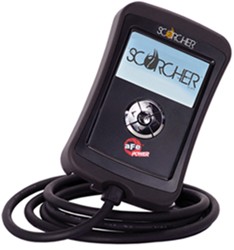
Oftentimes a performance tuner is recommended when you add certain aftermarket accessories to your vehicle. Cold air intakes (CAI), throttle body spacers and exhaust systems, for example, can add power to your vehicle and that newfound power has the potential to damage your engine or transmission. With a performance module, you can monitor the effects of these parts as well as maximize the gains they offer.
aFe offers a custom tuner called the Scorcher that is designed by Superchips to work specifically with aFe performance products. This tuner lets you get the most out of your CAI, throttle body spacer or upgraded exhaust system. The functionality of the Scorcher is essentially the same as Superchips' Cortex tuner.
Note: It is important to check that the tuner you choose has the capability to work with your aftermarket accessories. There may be issues of compatibility between hard parts from different manufacturers.
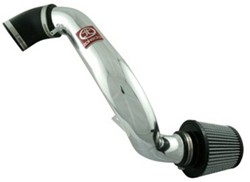
You can replace your vehicle's factory intake system with a cold air intake (CAI) system to boost horsepower and torque. Cold air is dense air, and the denser the air that enters your intake manifold, the more power your engine can produce. Certain tuners let you monitor the temperature of the air in the intake stream so that you can be aware of how well your new intake system is functioning. Because these systems offer your engine more power to work with, the engine may be capable of far more than the factory settings allow. Use of a tuner enables you to get the most out of your cold air intake.
A warning about cold air intake systems:
The mass air flow (MAF) sensor plays an integral role in determining the amount of fuel that your engine needs at a certain throttle position. MAF sensors are calibrated for factory intake systems, and their readings can be adversely affected by the installation of an aftermarket cold air intake system. As a result, your vehicle's computer may call for a leaner fuel curve. Because certain performance chips may alter your vehicle's fuel strategies, damage could occur from your vehicle running excessively lean. Typically, when this happens your vehicle will throw a trouble code and your "check engine" light will come on.
If this occurs with your vehicle, you may be able to download a custom tune from the programmer manufacturer to eliminate this concern. You will likely have to contact Edge, Bully Dog or Superchips directly to see if they can provide custom tuning for your vehicle.
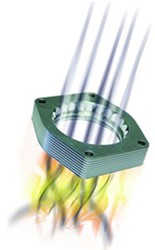
Throttle body spacers help to improve the atomization of the air-fuel mixture entering the combustion chamber of your engine. The result is a more complete burn, which leads to gains in horsepower and torque, as well as improved throttle response.
A throttle body spacer also functions as a heat sink to further cool the air entering your intake stream. Although a throttle body spacer may not be as effective as a cold air intake system, it can help lower air temperature to boost horsepower and torque. A tuner, therefore, would be beneficial for the same reasons as one would be with a new intake system.
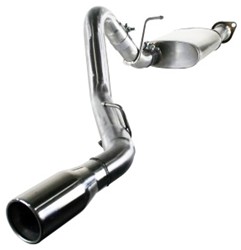
When you upgrade your vehicle's exhaust system, you improve overall engine performance. Aftermarket cat-back systems, for example, typically have large-diameter tubing and fewer baffles than factory systems. This creates a system that allows for more unrestricted airflow, decreasing back pressure ("exhaust turbulence") and thereby boosting power.
Again, a tuner can help you get the most out of this newfound power. And as with monitoring your intake temperature, most tuners let you monitor exhaust temperature and pressure. This is important not only in determining how well your system is functioning, but it also helps you prevent damage to your vehicle.
Superchargers and Turbochargers
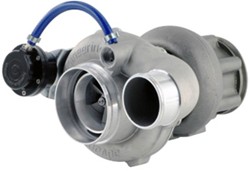
These devices are designed to improve your engine's volumetric efficiency by boosting air density via forced induction. This means that the turbocharger or supercharger draws in ambient air and compresses that air before letting it enter the intake manifold. The result is a greater mass of air entering your engine's cylinders on each stroke, thus providing superior power and efficiency.
These forced-induction systems may dramatically alter the performance of your engine, as well as its fueling and timing needs. Because each performance module is tested with stock vehicles, the tuner will not know how to function if your vehicle has an aftermarket upgrade of this kind. The only time that a tuner should be used with a turbocharger or supercharger is if your vehicle came with one of these forced-induction devices from the factory.
Custom Mounts and Accessory Parts
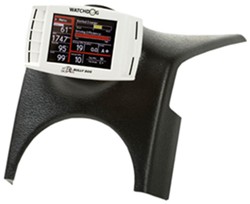
Most tuners with in-cab monitors come with suction-cup mounts out of the box so you can attach the programmer to your windshield. But if you would prefer a cleaner, from-the-factory look, you can mount your monitor to your dash or the driver's-side pillar, depending on what type of mount is available for your specific vehicle. Both Edge and Bully Dog offer custom mounts that fit the most commonly tuned vehicles.
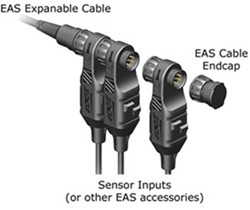
Replacement Parts and Accessories
Many replacement parts and accessories are available for performance tuners. Extra wiring and plugs are among the most common parts that may require replacing.
Additional pyrometer probes are available so that you can either replace your probe, or add another to your manifold to monitor EGT from an additional location.
Edge offers an entire accessory system that lets you easily attach different sensors to your programmer daisy-chain style for quick, simple installation. Monitor EGT, ambient air temperature, fuel rail pressure and more with these easy-to-install sensors.
Tips and Troubleshooting
Will a Tuner Work with My Vehicle?
One of the most important considerations when you begin looking at performance products is whether or not the part will work on your vehicle. This is true for hard parts and tuners alike.
See etrailer.com's application guide to determine whether or not custom-designed products will work with your stock vehicle.
To make sure that your vehicle can handle the extra power that a tuner will provide, ask yourself the following questions:
- Can my tires function at continuous high speeds?
- If you intend to alter certain factory parameters (like the speed limiter setting) you may have to upgrade your tires to ensure that they are able to withstand the increased speeds.
- Do I have an upgraded engine and/or transmission?
- With certain tunes - namely racing levels - damage can occur to stock engines and transmissions. These levels are typically designed for use with upgraded drivetrains only. A warning will accompany any level that requires upgrades.
- Has my fuel system been upgraded?
- Any time that you increase power, fuel pressure will be increased as well, so it may be a good idea to upgrade your fuel system. Upgrading components like your fuel pump will permit your vehicle to get the most out of your newly tuned engine.
Maintenance
Some tuners have special programs designed to remind you when basic maintenance is necessary. They keep track of your scheduled oil changes, filter changes and more, and then remind you when it comes time to do them again.
Always remember to return all your settings to "stock" and remove your performance tuner before taking your vehicle to the shop for servicing. Occasionally, certain updates may be run on your vehicle at the shop that will change factory calibrations. This can cause your settings to be overridden if the tuner is still plugged in.
Also, your vehicle may not comply with emissions regulations while running certain tunes, so be sure to return to "stock" and remove your programmer before heading in for emissions testing as well.
Quick Tips
Occasionally, tuning your engine can reveal a problem with your vehicle's computer. When this happens, the computer may shut down, disabling your vehicle. So, be sure to install the tuner and program your vehicle in a place where you don't mind being stuck if something goes wrong.
Some tuners advertise the ability to change levels on the fly. While having an in-cab monitor with easy-to-access settings does make it simple to change between levels or switch up the viewable parameters, remember that you should not be doing any of this while driving. To keep from getting distracted, on-the-fly transitions and adjustments should be made when you are not on the go.
Sometimes a vehicle needs time to get used to its newfound power. Most transmissions can relearn how to properly shift, but you have to help. Choose the power level that you will most often be driving in and take your vehicle out. Vary the speed, and cycle through each gear 20 to 30 times. Your shifting will become smoother in no time.
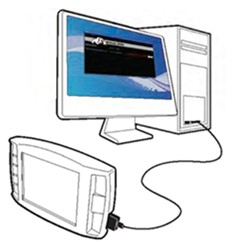
Downloadable Updates
Update your programmer via the Internet for the most up-to-date tunes and options. Most tuner manufacturers offer this feature and include USB cords with their programmers so that you can easily connect to your home computer. Some companies also offer downloadable software kits filled with exclusive features. Edge, for example, has the MyStyle download that lets you upload photos and set them as your monitor's background.
You should update your tuner right out of the box, before installing it on your vehicle to make sure that you get the best, most up-to-date features available for your specific vehicle.
Updated by: Raymond P.
Last updated: 7/6/18
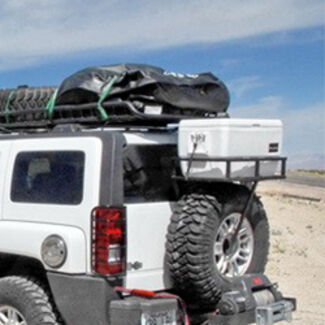


Joshua H.
9/18/2023
Any recommendations for tuners that will work with 2001 nissan pathfinder le and 2004 nissan pathfinder chinook?

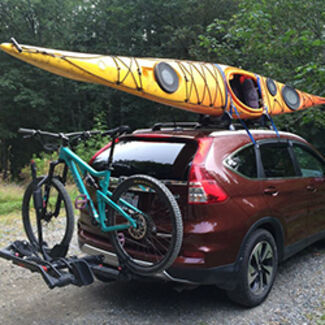
Tim S.
5/13/2023
First I want to thank e trailers for being a one stop shop. I have a 21 Ford Explorer 2.3 turbo that I use for work pulling a 10’ and sometimes a16’ trailer. I’m looking for a chip to improve power and most of all mileage. Thanks in advance and God Bless.
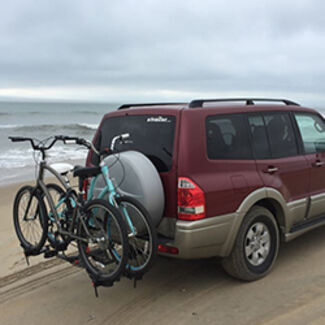
Departments
Towing
- Trailer Hitch
- Fifth Wheel
- Gooseneck
- Towing a Vehicle
- Front Hitch
- RV Hitch
- ATV Hitch
- HD Truck Hitch
- Vehicle Wiring
- Brake Controller
- Ball Mounts
- Weight Distribution
Sports and Recreation
Trailer Parts
- Utility Trailer
- Boat Trailer
- Landscape Trailer
- Enclosed Trailer
- 5th/Camper Trailer
- Car Hauler
- Horse Trailer
Vehicle
Contact & Help

What our customers are saying:
"Excellent service and communication. Expect part to be excellent too!"
Popular Vehicles
- Subaru Forester
- Ford F-350 Super Duty
- Ford F-250 Super Duty
- Chevrolet Silverado 1500
- Jeep Wrangler Unlimited
- Jeep Wrangler
- Ram 3500
- Toyota Highlander
- Ram 2500
- Chevrolet Silverado 2500
- Subaru Outback Wagon
- Chevrolet Silverado
- Dodge Ram Pickup
- GMC Sierra 2500
- Ram 1500
- Ford F-250 and F-350 Super Duty
- Jeep Grand Cherokee
- Toyota Tacoma
- GMC Sierra 3500
- Toyota Tundra
- Ford Escape
- More >>





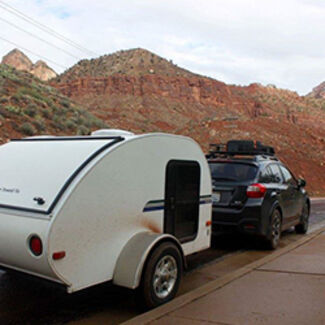



























Darrell N.
1/31/2024
My buddy has a edge evolution programer on his 2008 Chevy Silverado with 4.8 he uninstalled it sold the truck said I could use it on my truck will it' work on my 2002 Chevy Silverado 2500HD with the 8.1 gas And Alison trans